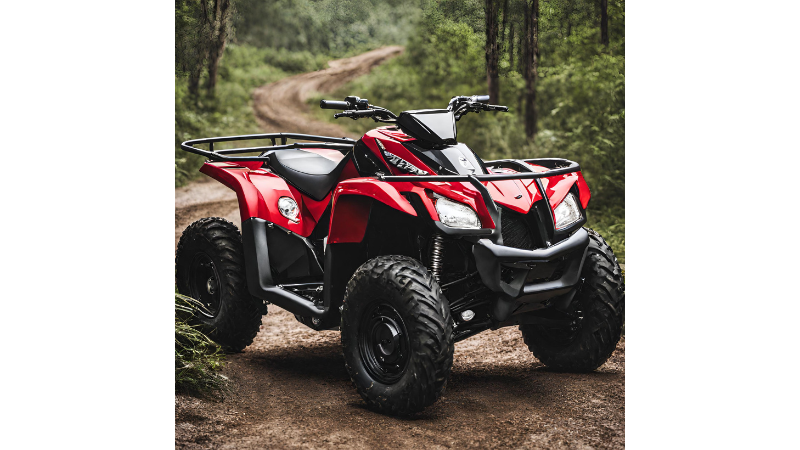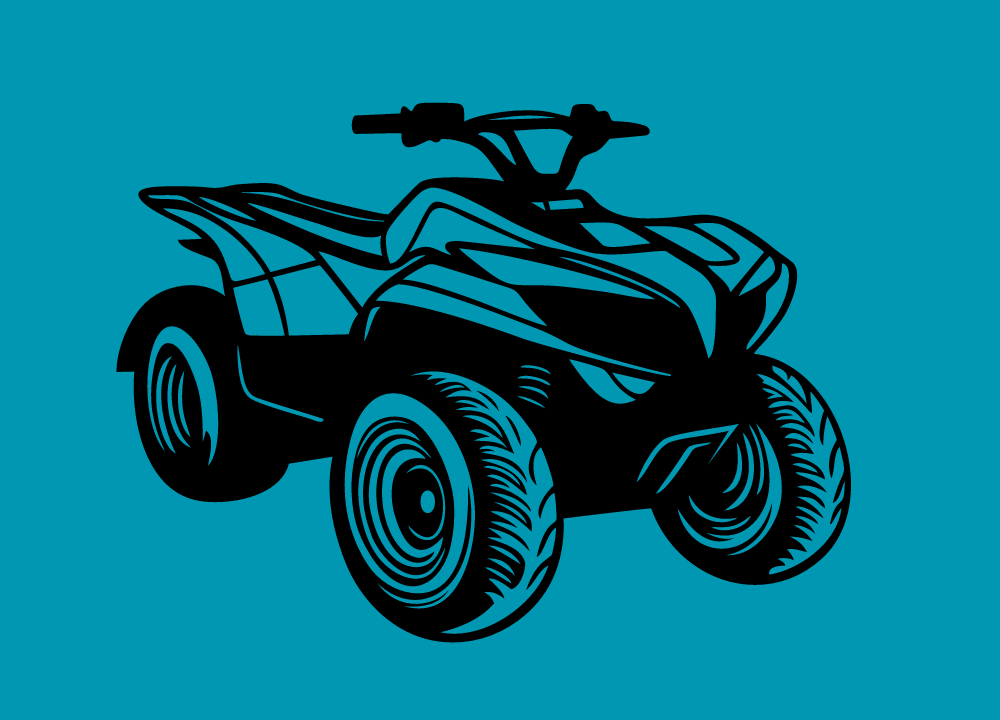The Yamaha Kodiak 700 may experience issues with its CVT belt and electrical system. Timely maintenance and quality replacements are key solutions.
Yamaha’s Kodiak 700, a powerful all-terrain vehicle, offers rugged reliability, but like any machine, it’s not immune to problems. Owners often discuss their experiences with various common issues that can arise, such as transmission hiccups or electrical glitches. While these challenges might be frustrating, understanding them is the first step towards finding effective solutions.
By maintaining a regular service schedule and using high-quality parts for any necessary repairs, most of these problems can be mitigated or even prevented. This introduction serves as a guide to pinpoint the typical trouble spots of the Kodiak 700, ensuring that enthusiasts and owners alike can enjoy their off-road adventures with minimal interruptions.
1. Yamaha Kodiak 700 Engine Issues
The robust Yamaha Kodiak 700 boasts a powerful engine, but like all machines, it can face issues. Understanding common engine-related problems helps riders maintain peak performance. Let’s delve into some typical engine issues and troubleshoot solutions so your adventures never hit a snag.
Overheating
Heat buildup in the Kodiak 700’s engine is a concern. It can cause major damage if not addressed. Below are steps to keep your engine cool:
- Check coolant levels regularly and refill if low.
- Inspect the radiator for any blockage and clean it.
- Ensure the thermostat functions properly for optimal temperature control.
- Look out for fan operation; it should turn on as the engine heats.
Oil Leaks
Oil leaks in your Yamaha Kodiak 700 may lead to serious engine issues. Here are quick fixes:
| Symptom | Possible Cause | Solution |
|---|---|---|
| Oily Engine Base | Loose drain plug or damaged gasket | Tighten the plug and replace gasket if needed |
| Stains on Ground | Worn seals or O-rings | Inspect and replace these components to prevent leakage |
Regular maintenance is key. Regular inspections and timely repairs prevent small problems from becoming big headaches. Stay on top of these issues, and your Kodiak 700 will reward you with dependable service on every trail.
2. Yamaha Kodiak 700 Electrical Problems
The Yamaha Kodiak 700 stands as a force within the world of ATVs. Despite this, riders may face electrical issues that need attention. Let’s troubleshoot some common electrical problems and their solutions, ensuring you get back to your adventures with minimal downtime.

Faulty Wiring
Electrical issues often stem from faulty wiring. Symptoms include flickering lights or accessories that fail to operate. Addressing this involves:
- Inspecting wires for frays or disconnections
- Cleaning corrosion off connectors
- Tightening all connections
- Replacing damaged wires or connectors
Regular maintenance prevents wiring problems.
Battery Drain
Experiencing a dead battery can be frustrating. Causes might be:
- Old or weak batteries
- Parasitic drains
- Short trips not charging battery fully
Consider these solutions:
- Testing the battery’s charge and replacing if necessary
- Finding and fixing electrical leaks
- Using a battery maintainer when not in use
Effective power management ensures reliability.
3. Suspension Troubles
Yamaha Kodiak 700 riders know that smooth rides rely on a solid suspension. Suspension issues can sour any off-road adventure. The right solutions can restore the thrill of the ride. Let’s delve into common suspension problems and their fixes.
Front Suspension Noise
Unwanted sounds from the front suspension often signal trouble. It’s vital to identify and fix these to maintain ride comfort and safety.
- Loose bolts – Check and tighten hardware.
- Worn bushings – Replace to eliminate noise and improve handling.
- Dry joints – Lubricate for a smoother operation.
Rear Shock Absorber Failure
The rear shock absorbers are key for a stable ride. Failure can be a serious setback. Prompt fixes keep performance optimal.
| Symptoms | Possible Causes | Solutions |
|---|---|---|
| Excessive bouncing | Damaged shocks | Replace shocks |
| Ride harshness | Air leakage | Seal or replace |
| Oil leaks | Worn seals | Rebuild or replace |
4. Transmission Concerns
The Yamaha Kodiak 700 is a robust ATV that handles tough terrain with ease. But sometimes, transmission issues can arise. Owners may notice problems when shifting or experience clutch slippage. Let’s delve into these common concerns and explore how to keep your ride smooth and responsive.

Shifting Difficulties
Shifting should be seamless on the Kodiak 700. If you face resistance or hesitation, it’s a sign of trouble. Here’s what to look for:
- Dirty or low transmission fluid: Check and replace if needed.
- Worn gears or linkages: Inspect and repair with professional help.
- Adjustment issues: Sometimes, a simple adjustment is all that’s needed.
Regular maintenance will prevent most shifting issues. It will also extend your ATV’s life.
Clutch Slippage
For those feeling a lack of response or “slipping” during acceleration, the clutch may be to blame. Clutch slippage hampers performance. It can hinder your Kodiak’s capabilities.
Signs of clutch slippage include:
- High engine revs but slow acceleration.
- A burning smell indicating excessive friction.
Consider these solutions:
- Check for worn clutch plates and replace if required.
- Ensure the clutch cable is properly adjusted.
- Use the correct type of oil as some can cause slip.
A well-maintained clutch ensures a powerful, responsive ride every time.
5. Fuel System Malfunctions
The Yamaha Kodiak 700 stands as a powerhouse in the realm of ATVs. Despite its stellar reputation, owners sometimes encounter fuel system complications. Identifying and resolving these issues ensures the Kodiak roars back to life, ready for every adventure.
Carburetor Issues
Dirt, debris, or a blockage can disrupt the carburetor, vital for the engine’s mixing of air and fuel. Signs of a faulty carburetor include rough idling, difficulty starting, and engine stalling.
- Clean the carburetor regularly to prevent blockages.
- Check the air filter and replace if necessary to ensure proper air flow.
- For stubborn problems, consider a professional carburetor tune-up.
Fuel Pump Failure
A faltering fuel pump can lead to poor engine performance, such as power loss and irregular acceleration.
Symptoms often link back to:
| Sign | Solution |
|---|---|
| Engine sputtering at high speeds | Test the fuel pump output pressure. |
| Engine not starting | Replace any worn or damaged fuel pump components. |
| Decreased fuel efficiency | Ensure the fuel pump’s relays and fuses are intact. |
Regular maintenance can often prevent these issues, but when they do arise, prompt action can save the day. Using quality replacement parts is key to a successful repair.
Frequently Asked Questions
Is There A Recall On Yamaha Kodiak?
As of my knowledge cutoff in March 2023, you should check the Yamaha Motor Corporation website or contact a local Yamaha dealer for the latest recall information on Yamaha Kodiak ATVs.
What Is The Recall On Yamaha Atvs?
Yamaha ATVs have been recalled several times for issues such as fire hazards and defective components. Check Yamaha’s website or contact a dealer for specific recall information.
What Is The Difference Between A 700 Grizzly And A 700 Kodiak?
The Yamaha Grizzly 700 offers more power and performance features, while the Kodiak 700 focuses on utility and comfort for long workdays.
Where Is The Yamaha Kodiak Made?
The Yamaha Kodiak is manufactured in Yamaha’s factories located in Japan and the United States.
Conclusion
Owning a Yamaha Kodiak 700 brings adventure and power to your outdoor activities. While issues may arise, solutions are often straightforward and manageable. Regular maintenance is key, and with this knowledge, riders can enjoy the rugged reliability of their Kodiak 700 for years to come.
Safe riding!

